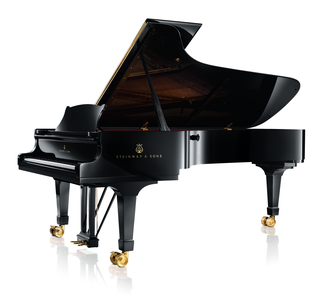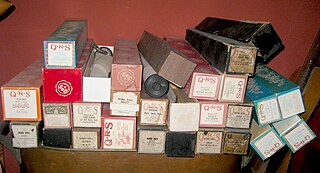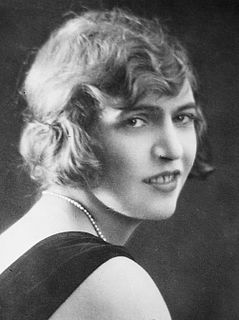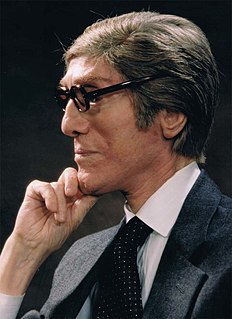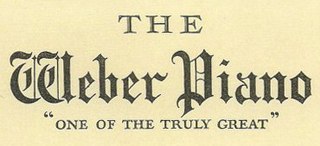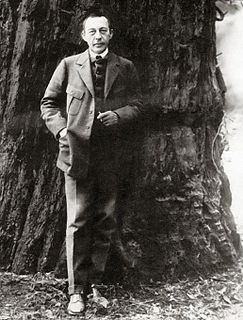This article needs additional citations for verification .(January 2010) (Learn how and when to remove this template message) |

Duo-Art was one of the leading reproducing piano technologies of the early 20th century, the others being American Piano Company (Ampico), introduced in 1913 too, and Welte-Mignon in 1905. These technologies flourished at that time because of the poor quality of the early Phonograph (Gramophone in Britain). [1] Between 1913 and 1925 a number of distinguished classical and popular pianists, such as Ignace Paderewski, Josef Hofmann, Percy Grainger, Teresa Carreño, Aurelio Giorni, Robert Armbruster and Vladimir Horowitz, recorded for Duo-Art, and their rolls are a legacy of 19th-century and early 20th-century aesthetic and musical practice. The recording process – using a piano wired to a perforating machine – was unable to capture the pianist's dynamics automatically. These were added by a recording technician, who manipulated hand controls to notate the dynamics onto the recording 'master'. Thus, post-recording editing was required to produce the finished performance – usually a joint effort by the recording technician and the pianist themself, who approved the final product. Thus, these recordings do represent the overall style of these great artists and are a good representation of their live performances.

American Piano Company was an American piano manufacturer located in East Rochester, New York, which was known from the beginning for the production of high quality player pianos. The company was established in 1908 under the aegis of Wm. Knabe & Co. of Baltimore as a merger between Chickering & Sons of Boston, Haines Brothers, Marshall & Wendell, and Foster, Armstrong & Company, all of Rochester, New York.

M. Welte & Sons, Freiburg and New York was a manufacturer of orchestrions, organs and reproducing pianos, established in Vöhrenbach by Michael Welte (1807–1880) in 1832.

The phonograph is a device for the mechanical recording and reproduction of sound. In its later forms, it is also called a gramophone or, since the 1940s, a record player. The sound vibration waveforms are recorded as corresponding physical deviations of a spiral groove engraved, etched, incised, or impressed into the surface of a rotating cylinder or disc, called a "record". To recreate the sound, the surface is similarly rotated while a playback stylus traces the groove and is therefore vibrated by it, very faintly reproducing the recorded sound. In early acoustic phonographs, the stylus vibrated a diaphragm which produced sound waves which were coupled to the open air through a flaring horn, or directly to the listener's ears through stethoscope-type earphones.
The Aeolian Company introduced the Duo-Art mechanism in 1913. It was most commonly installed in piano brands manufactured by Aeolian such as Weber, Steck, Wheelock, and Stroud. Most notably, it was also available in Steinway pianos under an exclusive agreement. Aeolian had been under pressure to make the mechanism available in Steinway pianos, but Steinway had no interest in pursuing a relationship with a company they saw as a competitor. To appease Steinway, Aeolian agreed to stop promoting its Weber brand as a premium brand, and stop sponsoring concerts by Paderewski and other pianists. The agreement also stipulated that Aeolian purchase a certain number of Steinway units each year, regardless of whether or not they could sell them. This contract eventually became a huge financial burden after the Wall Street Crash of 1929 [ citation needed ]. In 1925, its peak year, Aeolian produced more than 190,000 instruments, but the crash, the electric phonograph and the "talkies" all combined to drive the business into a terminal decline. [1]

The Aeolian Company was a manufacturer of player organs, pianos, sheet music, and phonographs. They created and operated Vocalion Records from 1917 to 1924.

The Wall Street Crash of 1929, also known as the Stock Market Crash of 1929 or the Great Crash, is a major stock market crash that occurred in late October 1929. It started on October 24 and continued until October 29, 1929, when share prices on the New York Stock Exchange collapsed.
